If you grow some of your own fruit and vegetables, then you’ll have quickly discovered that the task of properly harvesting and storing all of that delicious, freshly-grown produce is every bit as challenging as growing it.
How, for example, can you best protect those scrumptious apples from decay? What’s the best way to store that magnificent potato harvest? When should you pick those homegrown pears? What to do with that smorgasbord of fresh herbs? Feeling a little confused, bothered and bewildered? Here are some useful suggestions on ways to squirrel away as much of that delicious homegrown flavour and goodness as you can over the coming months.
Herbs
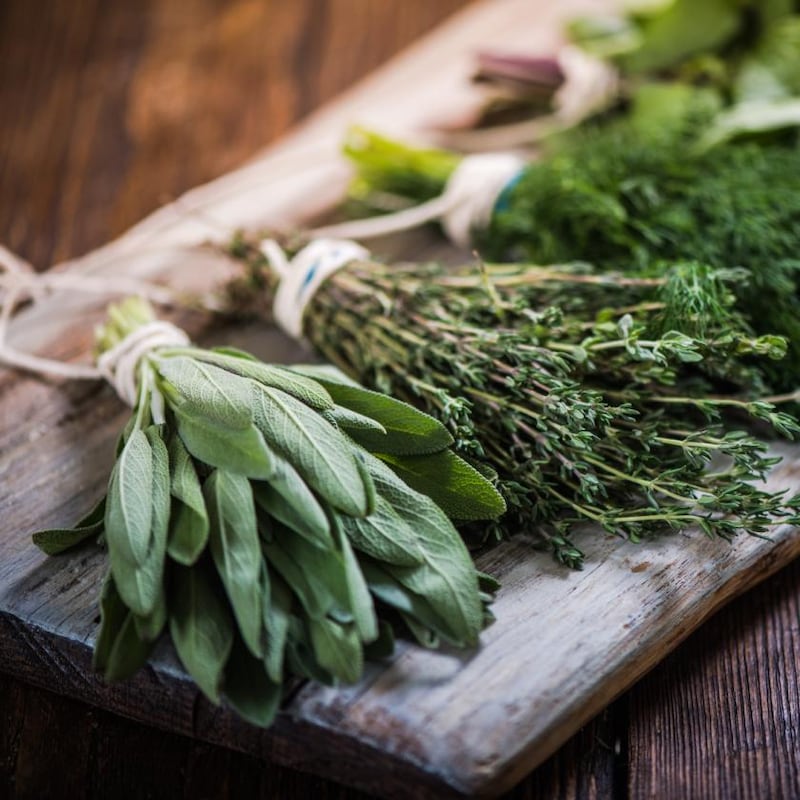
Let’s start with herbs, which can be easily air-dried at this time of year as small bunches tied with an elastic band and hung upside-down in a warm, dry, well-ventilated space indoors, a simple, age-old technique suitable for many species including mint, sage, bay, rosemary, thyme, oregano, and marjoram. Air-drying herbs in this way typically takes 6-8 weeks so it’s a good idea to place each upturned bundle in its own small paper bag as it dries to protect it from household dust and insects.
You can also dry many kinds of herbs by spreading them out on shallow trays lined with greaseproof paper and then placing them in an oven heated to 140-160F for about 15 minutes, by which time they should feel dry and brittle to the touch. To preserve their intense flavour for as long as possible, store your dried herbs in small airtight containers and keep them in a cool, dry, dark spot.
Fruit
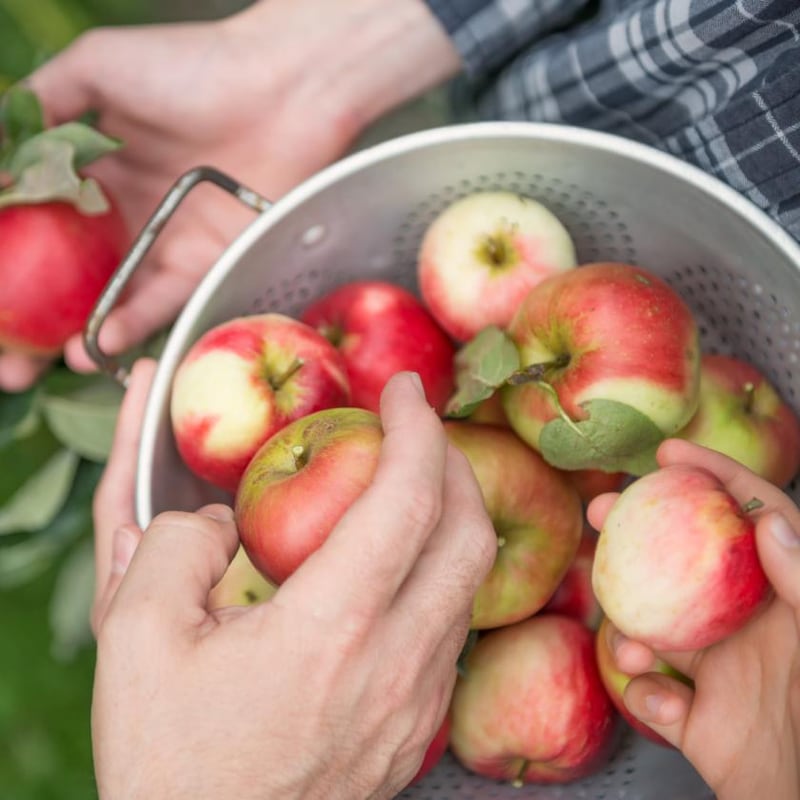
Many kinds of fruit trees and cane fruit such as blackberries and autumn-fruiting raspberries are also laden down with ripening fruit at this time of year. To protect them from hungry birds as well as wasps and other insects, cover low-hanging branches with fine garden netting while the fruit ripens.
Bear in mind that early varieties of apples and pears aren’t suitable for storing for any length of time so eat what you can as soon as it’s ripe, or cook it to a puree and pop it in the freezer. But later-ripening varieties will store perfectly well as long as you use unblemished fruit that’s been allowed to properly ripen on the tree. Just take particular care when it comes to windfallen fruit as even a small bruise or nick to the skin or flesh can serve as an easy route for decay. Placed in shallow, lidded boxes (stick a few holes in them for ventilation) in a cool, dry shed, these later-cropping varieties of apples and pears will store well for several months as long as you make sure to check them weekly and quickly dispose of any showing early signs of rot.
To judge when your homegrown apples and pears are ripe enough to harvest, gently twist the fruit away from the branch. If it’s ready, it should come away very easily. Pears will usually need a period (1-2 weeks) of further ripening indoors at room temperature to reach that state of perfect succulent juiciness. With figs, signs of ripeness include darkening of the skin, softness and slight splitting of the flesh and tiny beads of sweet nectar appearing at the base of the fruit. Freshly harvested figs will freeze very well as do most autumn berries.
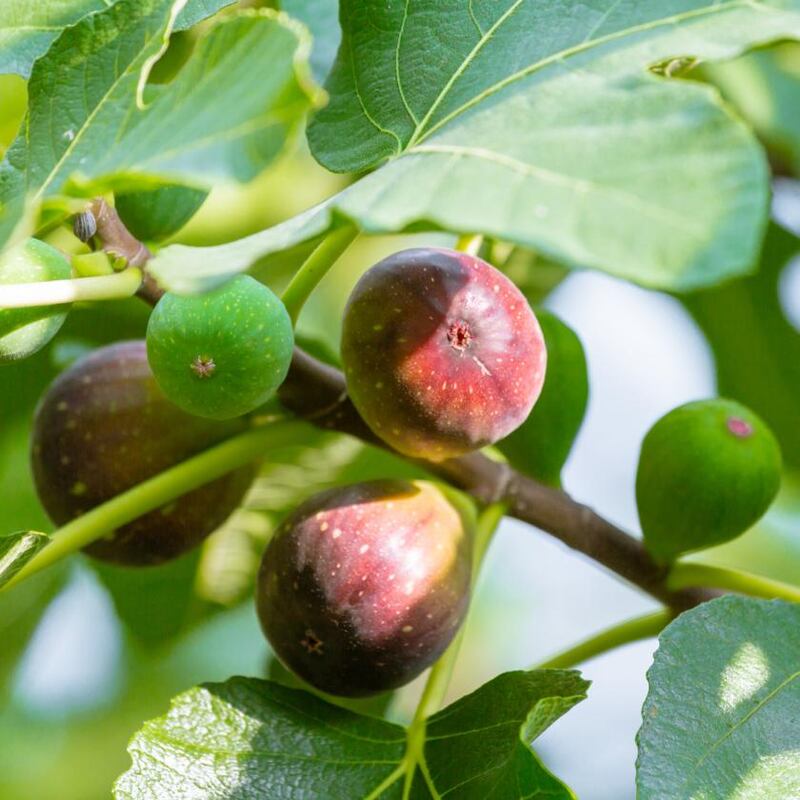
Other ways to make full use of all of that delicious fruity harvest include pickling, preserving, jamming and fermenting it, pressing it to make fruit juice, cider or perry, or using an electric desiccator (see fruithillfarm.com) to dry it in slices.
Many kinds of garden-grown fruits can also be used to make a deliciously fruity liqueur by simply placing them in a clean sealed jar filled with vodka, gin, rum or brandy.
Onions
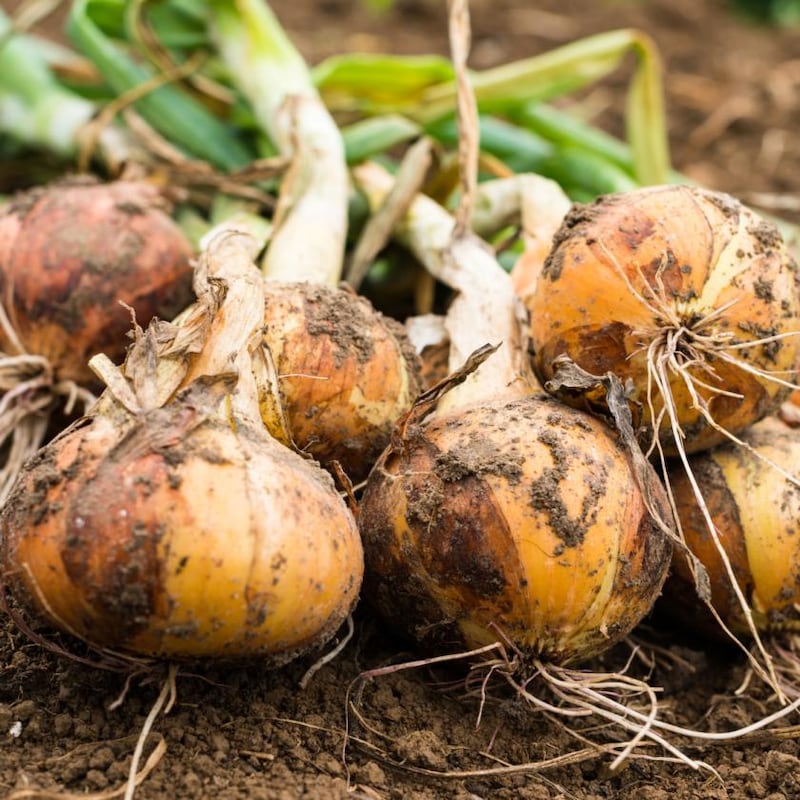
Spring-planted onions are another kitchen garden crop that’s typically ready to harvest at around this time of year. Clear signs of ripeness include yellowing leaves that have started to fall over, at which point the plants need to be gently pulled up (leaves intact) and spread out somewhere warm and dry like a bright glasshouse or sunny porch.
Once properly dry, you can either plait them or (this sounds strange but it works beautifully) put them in the cut-off legs of old tights and then hang them somewhere dry and cool but frost-free. Stored this way, they’ll keep until next spring.
Root vegetables
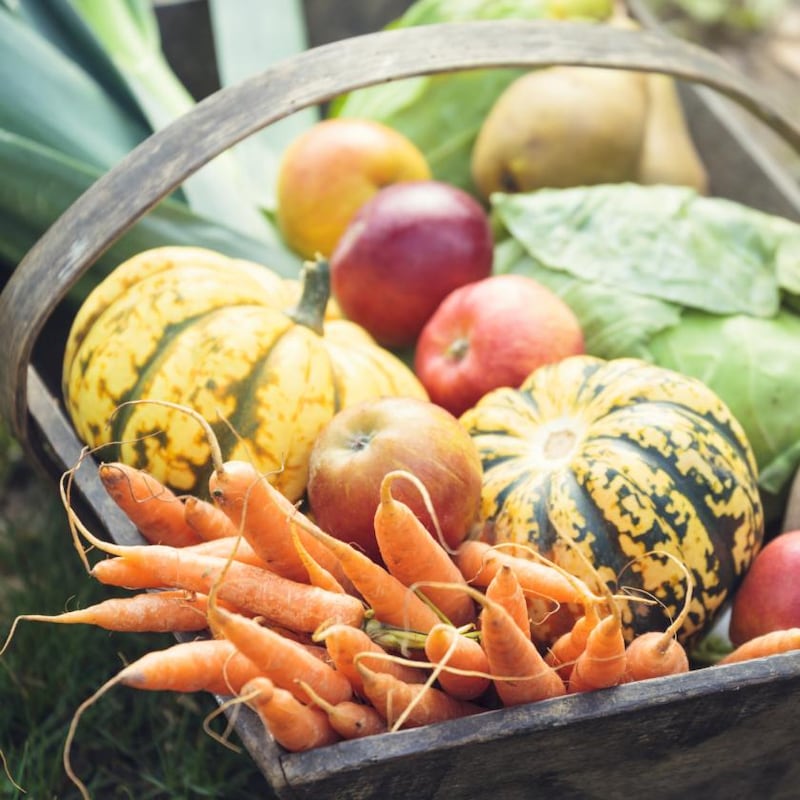
If your soil is suitably free-draining even in winter, then root vegetables such as carrots, celeriac, Jerusalem artichoke, swede turnips and parsnips can be safely left in the ground until needed. But in gardens and allotments prone to winter wetness and with large populations of slugs, it’s best to start lifting them from mid-October and storing them in lidded containers of sand in a cool, dry shed. This will maintain much of their flavour and freshness well into next spring. Maincrop beetroot should also be harvested in October and can be stored this way as can maincrop potatoes.
Pumpkins
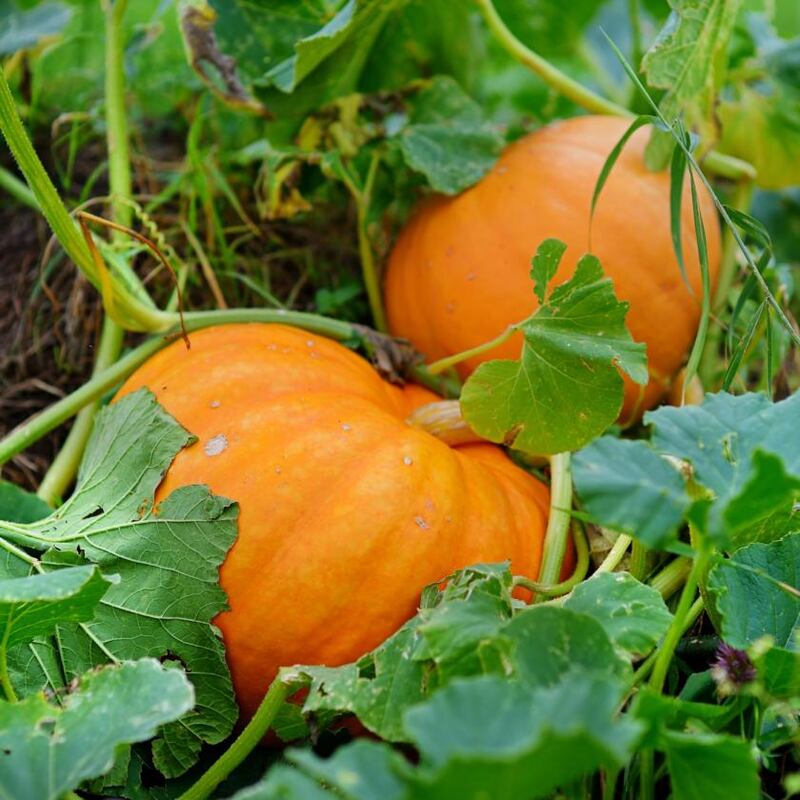
Pumpkins and winter squash are other popular kitchen garden and allotment crops that will be ready for harvesting over the coming weeks but they do need some loving attention to give their best. To protect the heavy, swelling fruit from rotting or splitting where it rests on damp ground, gently place a small piece of wood or an old roof tile beneath it while it ripens, making sure not to accidentally damage or sever the brittle stem or handle of the fruit where it joins the rest of the plant.
Ideally, pumpkins and winter squash should be picked when all the foliage has naturally died back but our typically cool, damp Irish summers mean that autumn frosts can hit the plants before this happens, rendering the crops inedible. In colder areas, help the fruit to cure and harden by protecting vulnerable plants from cold temperatures with a layer or two of garden fleece at night (remove this during the day). But it’s still important to harvest the fruit before the first killer frost, making sure to keep the fruit stalk or handle attached when you do so to prevent rot setting in.
If a hard frost comes before their outer leathery skin has properly cured, place the fruit outdoors during any bright, warm dry days in the first few weeks following the harvest to complete the process, making sure to bring it back in under cover at night when frost is forecast. Once properly cured, pumpkins and winter squash can be stored in a cool, dry spot and will keep well into next spring. Eaten roasted, stuffed, baked in a tart or in a hearty winter soup, they’ll serve as yet another delicious, nutritious reminder of the joys of a winter larder filled with tasty, homegrown produce.
For further information on creative, clever ways to preserve fruit and vegetables from your kitchen garden or allotment, check out Darina Allen's Forgotten Skills of Cooking and The Art of Fermentation by Sandor Ellix Katz.
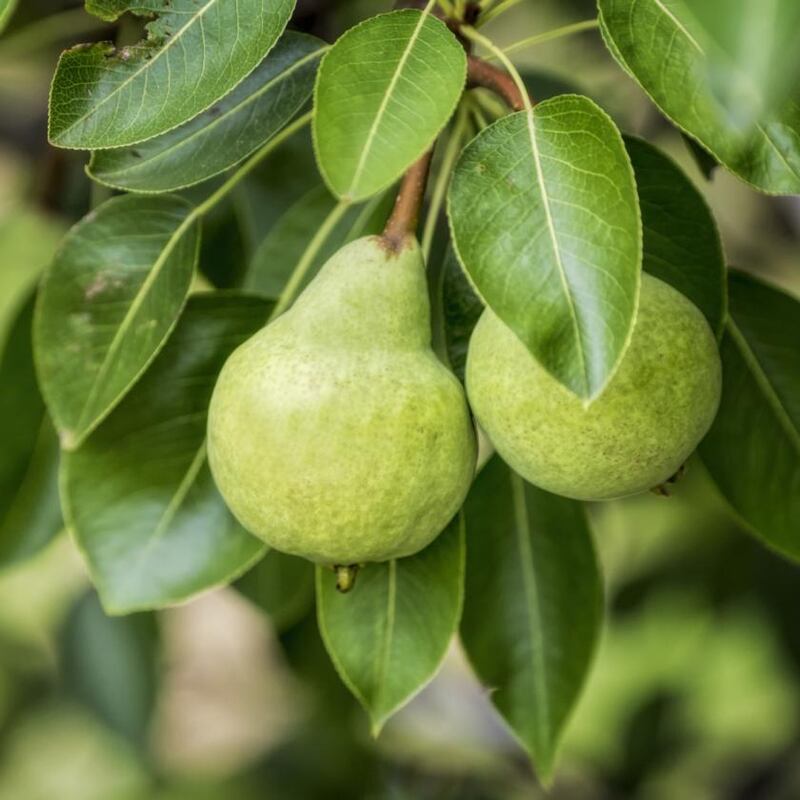
This week in the garden
September is a good time of the year to carry out repairs to lawns and to sow grass seed where required. For best results, even out bumps and hollows with a good quality top soil or seed compost and rake to an even tilth before gently watering and then sprinkling and raking the seed into the surface, spreading it at a rate of roughly 25g per square metre. If rain doesn’t fall in the following few days, give the ground a second gentle watering to help germination.
Keep deadheading late-flowering perennials to encourage them to prolong their display for as long as possible. With autumn storms and strong winds increasingly likely as the month progresses, take extra care to make sure that any tall-growing varieties are very well staked or supported to protect them from being badly damaged.
Dates for your diary
Tomorrow, September 12th, Open & Plant Sales Day at Fruitlawn Gardens, Abbeyleix, Co Laois (R32W5W7), the home of garden designer Arthur Shackleton, admission €5, under-12s free, see arthurshackleton.com for details. September 18th-26th, Mount Venus Nursery Walled Garden, Tibradden, Mutton Lane, Dublin 16, autumn sale with 20 per cent off all plants plus extra discounts on some plants, see mountvenusnursery.com. Starting Sunday, September 19th and finishing on Saturday 25th at Dunmore Country School, Durrow, Co Laois, a two-day course in intensive horticulture with organic gardener and environmentalist Tanguy de Toulgoet, €100, see dunmorecountryschool.ie.



















